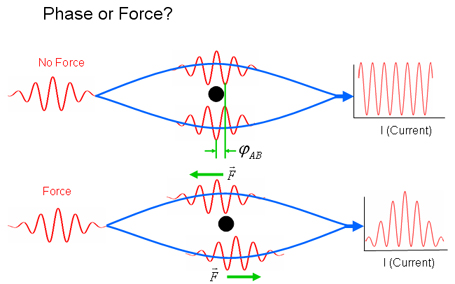The Aharonov-Bohm Effect is a well known phenomenon. It has been the topic of an ongoing discussion for more than forty years. Many papers have been published on the topic and the generally accepted view is that the Aharonov-Bohm effect is a purely quantum mechanical effect. Boyer suggests a radically different view. A force causes spatial shifts of wave packets which explains the effect. Zeilinger described a possible experimental test that would exclude all force explanations. This is called testing the non-dispersionless nature of the AB-effect. To this date this test has never been performed. Figure 1 illustrates the basic idea. If there is force the AB-fringes do not extend beyond the coherence length, while for a pure phase effect the finges do extend beyond the coherence length.

Alternatively, we can look if an electron pulse passing by a solenoid is delayed or not. For a wavepacket there is no delay if the phase shift for each velocity (frequency) component is the same (left Flashmovie). If there is a phase shift that changes linearly with the velocity (i.e there is dispersion), then the wavepacket is delayed (right Flashmovie).
For both movies press start and observe the effect that the solenoid has as the electron wave propagates by it. The "field strength" of the solenoid can be changed by dragging the sliders labeled V. By stopping the movies when the pulse has reached the right of the screen and changing V the effect of the solenoidal current on the electron wave can be inspected. On the left the pulse does not shift (i.e. the group velocity does not change), but the relative phase does). This is the generally accepted view of the AB-effect. On the right the pulse does shift as does the relative phase. This is what would happen of there was a force acting.